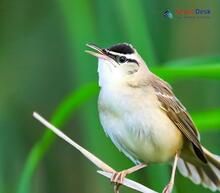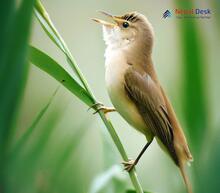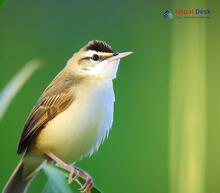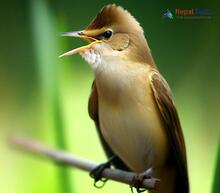Acrocephalus: Discovering the Bird Genus of Nepal
Nepal, a beautiful country known for its rich biodiversity, is a paradise for bird enthusiasts and ornithologists. Among the many fascinating species found in the region, one remarkable group of birds stands out - the Acrocephalus genus. In this blog post, we will delve into the classification of these birds, explore their common features, discuss their evolutionary relationships, and touch upon their intriguing nomenclature.
Classification and Common Features
Acrocephalus belongs to the family Acrocephalidae and is a genus that comprises various species of warblers. These birds are typically found in marshy or wetland areas, with some species living in open grasslands. Identifying features include relatively long legs, slender bodies, and elongated bills well-adapted for catching insects.
Almost all members of the Acrocephalus genus possess a distinct eyebrow stripe and have an overall brownish plumage or buff-colored markings that help them blend seamlessly with their natural environments. Their melodious songs often project far-reaching territorial calls or form part of incredibly complex vocalizations attracting mates during breeding seasons.
Evolutionary Relationships
The Acrocephalus genus shares its ancestry with other warbler lineages within the larger superfamily Sylvioidea. This clade distinguishes itself from other avian groups by unique genetic markers such as nuclear DNA and morphology variations. Comprehensive studies relying on modern techniques like DNA sequencing work alongside traditional methods such as morphological comparisons to provide incredible insights into the evolutionary relationships of these captivating creatures.
One fascinating breakthrough is that scientists initially classified some Acrocephalus species as "Reed Warblers" due to similarities in appearance but later revisions based on genetics led to significant reclassifications within this genus.
Nomenclature
The name Acrocephalus has Greek etymological roots with "akros" meaning high or extreme, and "kephale" translating to head. This can be attributed to the noticeably large heads and long, sharp bills of these bird species. As each species is discovered and studied, they are given unique scientific names reflecting their distinct characteristics or geographical distributions. For example, Acrocephalus stentoreus, the Clamorous Reed Warbler, describes its raucous song and presence near reed beds.
Acrocephalus warblers are also assigned names based on local languages and cultural variations found in areas where they reside. In Nepal, some species even carry names associated with region-specific folklore or indigenous stories tied to their habitats and behavior.
In conclusion, the Acrocephalus genus exhibits a fascinating world of unique warblers that captivate both scientists and bird enthusiasts. The natural beauty of Nepal and its diverse avian life provide ample opportunities for those eager to learn about and appreciate these extraordinary creatures. So next time you find yourself exploring the great outdoors in Nepal or any other wetland dweller regions across the globe, keep an eye (and ear) out for the elusive and enchanting Acrocephalus warblers.




